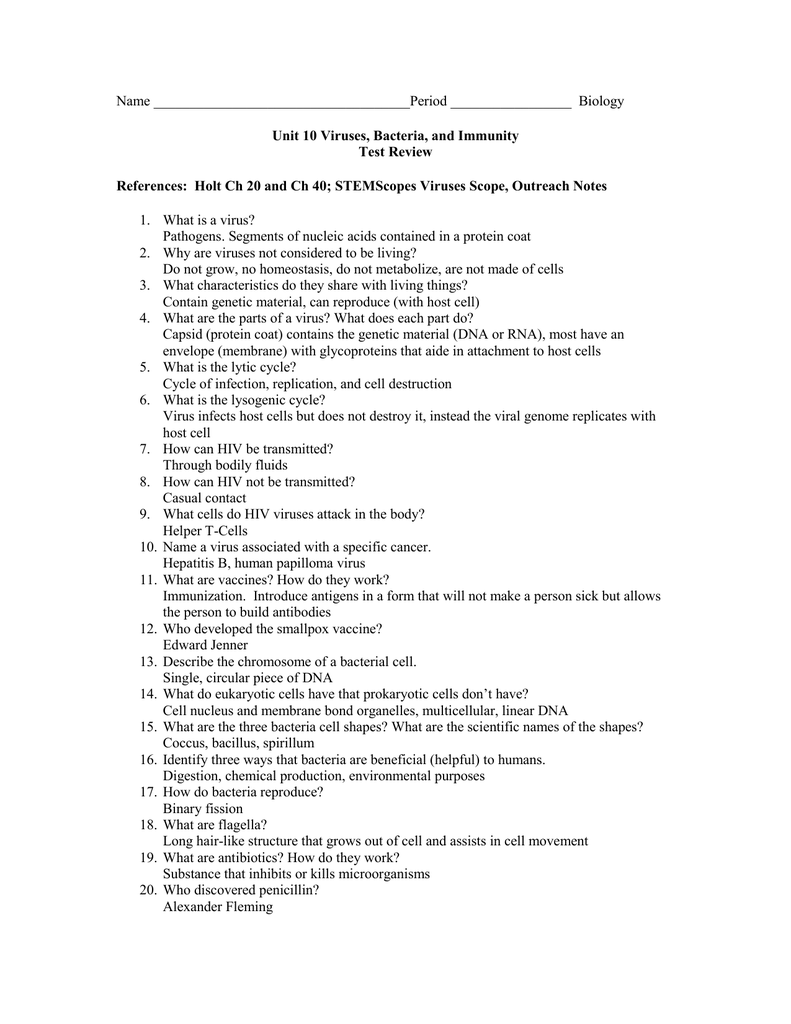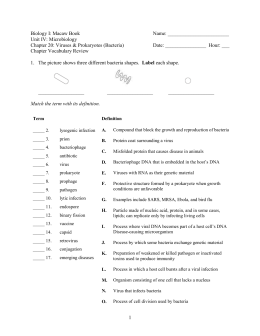Viruses Biology Study Guide

Jun 21, 2018 - Using omics and other data, researchers performed network analyses that pointed to interactions between human herpesviruses and other.
University calculus solutions manual hass. Get instant access to our step-by-step University Calculus solutions manual. Author: Joel Hass, Joel R Hass, George B Thomas Jr, Maurice D Weir.

- Answer these would-you-rathers and we'll tell you if you're introverted or extroverted.
- Distinguish between a virus with a broad host range and one with an extremely limited host range, and give an example of each.
Prokaryotic cells live in virtually all environments on Earth, including soil, water, and air. They have existed for approximately 3.5 billion years, and they have evolved into every conceivable ecological niche on, above, and below Earth’s surface. Prokaryotic cells are often categorized according to their shapes. The spherical bacteria are referred to as cocci (the singular is coccus); the rod-shaped bacteria are bacilli (the singular is bacillus); and the spiral bacteria are spirochetes if they are rigid or spirilla (the singular is spirillum) if they are flexible. Recent research has focused on the microbiome and the important role prokaryotes play in human health and disease. The microbiome is the numerous bacterial communities found on and within the human body.
Our intestines alone are home to approximately 700 species of prokaryotes, and their numbers outnumber all human cells in the body tenfold.
Biology Viruses And Bacteria
The virus that causes AIDS (greatly magnified) Nobody is quite sure whether viruses are living things or not. The may have come from viruses. But it’s also possible that viruses evolved from living and got gradually less complex and more dependent on their hosts to live. We don’t know whether there are any viruses anywhere in the Universe except on – we have never found any evidence of any. We don’t really know when viruses got started, either. It was probably at least two or three billion years ago, when the only life on Earth was. A virus is very small.
It’s much smaller than a cell. It can’t survive for long on its own, but only inside the of living creatures – bacteria, plants or animals. A virus is just a few of or, wrapped up in a layer of protein molecules to protect it. Some viruses are shaped like spirals, others like soccer balls. A few big viruses combine both forms, so they have a soccer ball shape with a spiral tail.
Some viruses can also steal bits of the cells they invade and make an extra protective wrapper out of the bits. Viruses make more viruses by using a living to do their work for them. A virus uses its to convince a cell to make more of the virus’s and DNA. Those become a new copy of the virus.

Sometimes this process kills the cell, and other times it doesn’t, depending on what kind of virus it is. But generally it is not good for a cell to have viruses in it. We call the damage this does a disease or sickness. Different kinds of viruses cause different sicknesses: a plant virus causes rose mosaic disease, for example, while an animal virus causes rabies. Human viruses cause ordinary colds, influenza, chickenpox, and also dangerous diseases like and AIDS. Nobody knows how to cure diseases caused by viruses, but we can prevent some of them using. One way to think about viruses is that they are like for an animal or person.
They contain basically only the necessary DNA molecules for the organism. Then when the virus gets inside a cell, it develops into a bigger organism we call a virus factory, using the cell’s material to build itself. That virus factory then makes lots of new viruses, just like the new baby grows up to make new sperm, and they go out into the world to reproduce themselves again. While the virus is in the form of a virus factory, it can even be infected itself by smaller viruses, and the smaller viruses can make it sick. Bibliography and further reading about viruses.